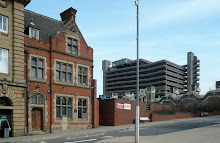

Image: Jo Coupe 'Rarefied (Phalaenopsis lobii)', 18ct rose, 15 x 10cm
Tatton Park Biennial 3 May - 28 September 2008
Tatton Park Biennial is a new contemporary art event for the UK supported by The Northwest Regional Development Agency; Arts Council England, Northwest; Cheshire County Council; Cheshire's Year of Gardens 08; The National Trust; Manchester Airport; The Tatton Park Trust and Tatton Park. The Biennial will be staged from May to September 2008 and presented in association with Cheshire’s Year of Gardens 08.
Curated by Danielle Arnaud and Jordan Kaplan from commissioning group Parabola, the 2008 Biennial theme is Botanical Collections and Collectors. Over 30 artists, performers and writers will develop new work in response to Tatton Park's gardens, investigating the legacy of collections, collectors and the designed landscape amid current issues of climate change and globalisation.
Jo Coupe’s work for the Biennial focuses on the value and collectability of objects; their value as things bought and sold, traded, catalogued and displayed. She has worked with Tatton’s Orchid collection, which, like any botanic assemblage is prone to decay. It is also of extreme monetary worth, with some specimens fetching thousands of pounds when made available for sale. It is this sense of the ‘worth’ and ‘value’ of Tatton’s collections that has caught the artist’s imagination and has spurred her on to produce a solid gold cast of a rare orchid. Its placement, in the Orchid House, is deliberately problematic – how can the work of art be viewed when the glasshouse that contains it is not opened to the public most of the time? How can these specimens afforded titles of exceptionality be anything but rarefied?
Corruptibility is part and parcel of a valuable collection: it suggests both issues of decay and, more pertinent to this work, perhaps, issues of conscience. The Orchid House is normally only open to the public when staffed because of the precocity and delicate nature of its contents and the need to interpret these unusual plants. Coupe’s cast challenges this perception, tossed to one side in the gravel alongside its living relatives, it invites theft, but, as it is contained within a ‘safe’ environment (literally and figuratively – the living orchid has been cut, killed and preserved as a gold-encrusted corpse), little harm can come to it.
Part of the joy of the work is the knowledge that many of the plants that sit near to it are much more ‘valuable’ than the object itself. The artist asks which one is most precious? When all known signifiers of status are removed, can we see the inherent value the connoisseur dedicates a lifetime to perfecting their understanding of?
contact Tatton Park
Tatton Park, Knutsford,
Cheshire, WA16 6QN
Tel +44 (0) 1625 374400
info@tattonparkbiennial.org










